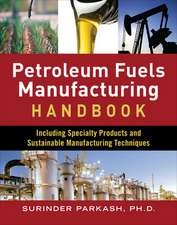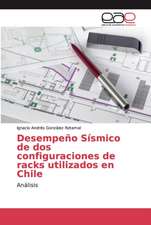3D Scanning for Advanced Manufacturing, Design, an d Construction: Additive Manufacturing Skills in Practice.
Autor Confaloneen Limba Engleză Hardback – 27 feb 2023
Preț: 391.46 lei
Preț vechi: 489.32 lei
-20% Nou
Puncte Express: 587
Preț estimativ în valută:
74.94€ • 77.90$ • 62.13£
74.94€ • 77.90$ • 62.13£
Carte disponibilă
Livrare economică 16-30 ianuarie 25
Livrare express 02-08 ianuarie 25 pentru 35.69 lei
Preluare comenzi: 021 569.72.76
Specificații
ISBN-13: 9781119758518
ISBN-10: 1119758513
Pagini: 224
Dimensiuni: 178 x 254 x 16 mm
Greutate: 0.61 kg
Editura: Wiley
Seria Additive Manufacturing Skills in Practice.
Locul publicării:Hoboken, United States
ISBN-10: 1119758513
Pagini: 224
Dimensiuni: 178 x 254 x 16 mm
Greutate: 0.61 kg
Editura: Wiley
Seria Additive Manufacturing Skills in Practice.
Locul publicării:Hoboken, United States
Cuprins
Preface xi
How to Use This Book xiii
Chapter 1 History of Metrology 1
1.1 Introduction 2
1.2 The History of Metrology 2
1.3 The International System of Units (SI) 3
1.4 The History of the Metric System 3
1.5 The History of the British Imperial System (IS) 4
1.6 Evolution of Metrology 13
1.7 Milestones of Metrology 22
Chapter 2 3D Scanning Basics 25
2.1 Basics of Laser Light Technology 25
2.2 Laser Safety 25
2.3 So What Exactly Is a Laser? 28
2.4 Laser Types 29
2.5 LIDAR vs Laser-Radar 32
2.6 Laser-Radar 32
2.7 Basics of 3D Scanning 35
2.8 How It Works 35
2.9 Limitations 35
2.10 Accuracy 36
2.11 Modern Metrology 37
Chapter 3 Scanning Equipment 39
3.1 Introduction 39
3.2 Triangulating Laser Scanners 39
3.3 Data Acquisition Variables 41
Chapter 4 Data Acquisition and Processing Software 65
4.1 Introduction 65
4.2 Data Acquisition Software 66
4.3 Inspection Software 71
4.4 Data Export Options 72
4.5 Point Clouds 73
4.6 Processing and Registration 78
4.7 Survey Controls 80
4.8 Polygonal Mesh 81
4.9 Using Processed Datasets 82
Chapter 5 Post-Processing 85
5.1 Introduction 85
5.2 Coordinate Systems 86
5.3 Scaling 93
5.4 Mapping Techniques 93
5.5 CAD to Part Comparison 97
5.6 Root Mean Square and Standard Deviation 98
5.7 The Method of Least Squares 99
5.8 What Is Uncertainty? 102
5.9 Contributing Factors to Uncertainty 105
5.10 Typical Post-processing Workflow 108
Chapter 6 Reverse Engineering for Industrial and Consumer Applications 111
6.1 Introduction 111
6.2 Industrial Applications 112
6.3 Case Studies 118
6.4 Racing Yacht Boat Build 118
6.5 Reverse Engineering: Cessna Caravan Performance Upgrade 121
6.6 Replication of a Classic Propeller Design 123
6.7 Roller Coaster Inspection 126
6.8 Argomaiden Sculpture 129
Chapter 7 Reverse Engineering for Architecture, Engineering, and Construction 133
7.1 Introduction 133
7.2 Modeling for Architects and Engineers 134
7.3 Case Studies 142
7.4 Research Facility Coordinate Control System 142
7.5 Architectural Ornament Replication 146
7.6 Fonthill Castle, Bronx, NY 149
7.7 Infrastructure Preservation 153
7.8 Generating Station Turbine Replacement 158
Chapter 8 Future Directions 161
8.1 Software Development 162
8.2 Technology 162
8.3 Extended Reality 163
8.4 UAV and AV 165
8.5 Industry Trends 165
8.6 Summary 168
Chapter 9 Resources 169
9.1 Units of Measure 175
9.2 Coordinate Metrology Society (CMS) Certification 181
9.3 Certification Committee 181
9.4 CMS Certification Levels 183
9.5 CMS Level-Two Certification 185
9.6 National Metrology Laboratories and Institutes 187
Metrology Glossary 191
Index 201













